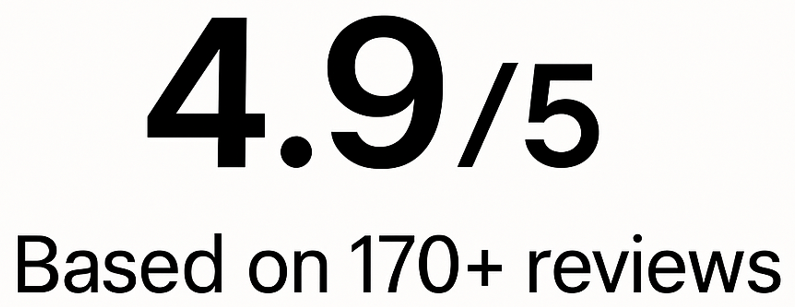Key Takeaways
- A winding-up petition is a formal legal procedure where a creditor requests that the court close a company unable to pay its debts as defined in the Insolvency Act 1986.
- Any creditor owed over £750 can issue a winding-up petition if payment remains outstanding, making it a powerful step for debt enforcement.
- Inaction after being served with a winding-up petition puts your company at immediate risk of compulsory liquidation, loss of business, and serious trading restrictions.
- Directors have as little as seven days to act before the petition becomes public, which can trigger frozen bank accounts and reputational crisis.
- Ignoring a winding-up petition exposes directors to personal risk, including claims for wrongful trading and investigation by the Insolvency Service.
- Companies may successfully defend a winding-up petition if there is a genuine dispute over the debt or the debt has already been paid.
- If the court grants a winding-up order, all company assets are frozen and an Official Receiver takes control of the company and its affairs.
- Our firm is rated Excellent on Trustpilot with over 130 five-star reviews and a 4.9/5 rating, placing us among the top law firms for insolvency and debt defence in the UK.
What Is a Winding-Up Petition and How Can It Affect Your Company in the UK?
If your company owes a creditor just £750 or more and cannot pay, you could be faced with a winding-up petition—one of the most serious insolvency measures a creditor can take under the Insolvency Act 1986. From the moment a petition is served, directors have only seven days before the threat becomes public, risking frozen accounts and severe reputational damage.
A winding-up petition is not simply a letter of demand; it signals a formal attempt to close your company and convert remaining assets to pay creditors. Whether you are a creditor considering this route, or a director whose company has received a petition, prompt and strategic legal action is imperative.
If you are confronting a winding-up petition, our expert insolvency solicitors deliver tailored advice and rapid action to protect your interests.
Who Can Issue a Winding-Up Petition in the UK?
A winding-up petition is a formal application to the court seeking an order to wind up a company believed to be unable to pay its debts. Typically, this is initiated by a creditor who is owed at least £750 and can demonstrate that the debt is not genuinely disputed. Upon acceptance, the court appoints a liquidator to realise company assets and distribute them among creditors.
Eligible petitioners include:
- Creditors (individuals or companies) owed a liquidated, undisputed sum of £750 or more
- Contingent or prospective creditors with the court’s permission
- Shareholders, but only in exceptional cases on “just and equitable” grounds
- Regulatory bodies and HM Revenue & Customs (HMRC) for unpaid tax liabilities
All winding-up petitions are strictly regulated under the Insolvency Act 1986 and Insolvency Rules 2016. Attempting to use this procedure without meeting eligibility or in the face of a genuine dispute risks costs penalties and wasted expenditure.
Understanding eligibility for winding-up petitions is crucial—for both creditors considering enforcement, and company directors facing threats of compulsory liquidation.
When Can a Creditor Apply for a Winding-Up Petition Against a Company?
A winding-up petition is appropriate when the company cannot pay its debts as they fall due. Common triggers for seeking a winding-up order include:
- The debtor company’s failure to satisfy a statutory demand for payment within 21 days (section 123(1)(a), Insolvency Act 1986)
- A court judgment for payment remains outstanding
- The company’s debts outweigh its assets, known as balance sheet insolvency (section 123(2), Insolvency Act 1986)
- The company admits insolvency or an inability to pay on demand
Ignoring a statutory demand—regardless of the debt size—exposes your business to the risk of being wound up. If you believe the debt is genuinely disputed or already settled, one of our litigation solicitors can help you urgently protect your position.
You may also find our article on Understanding Statutory Demands: Your Expert Legal Guide useful if you are facing or considering a statutory demand.
How Does the Winding-Up Petition Process Work in Practice?
The winding-up petition process involves several precise steps, each with strict legal requirements:
- Drafting the Petition: The creditor completes Form Comp 1 and an accompanying statement of truth, submitting these along with the appropriate court fee and deposit.
- Serving the Petition: The petition is personally served at the company’s registered address by a process server.
- Advertising in The London Gazette: The petition must be advertised within 7 business days of service to alert other creditors and the banking sector.
- Company Response: The company can pay, settle, or file a notice of opposition with supporting evidence to challenge the grounds of the petition.
- Court Hearing: The case is heard, and the court decides whether to grant a winding-up order or dismiss the petition.
Once a winding-up petition is advertised, banks often freeze company accounts within days. Responding immediately after receiving notice offers the best chance of saving both business operations and reputation.
Step-by-Step Timeline After Filing a Winding-Up Petition
- Day 0: Petition filed and served on the company at its registered office.
- Within 7 days: Petition advertised in The London Gazette if not settled or opposed.
- Within 1–2 weeks post-advertisement: Banks typically freeze company accounts, often before any hearing.
- Response window: Company must settle or dispute debt promptly to avoid escalation.
- 4–8 weeks from petition: Court hearing is held to determine the outcome.
Taking immediate, strategic steps in the days following receipt of a winding-up petition can make the difference between rescue and terminal liquidation. Failure to act almost always leads to severe, lasting consequences.
To learn more about stopping winding-up petitions, read our article on How to Stop a Winding-Up Petition.
What Happens to a Business After Being Served With a Winding-Up Petition?
Service of a winding-up petition places immediate pressure on the business, presenting multiple urgent risks:
- Banks often freeze all company accounts once the petition is publicly advertised, stopping most commercial activity.
- Suppliers, clients, and landlords may enforce break clauses or terminate contracts due to concerns about ongoing insolvency.
- Any payment or asset transfer made after the petition may later be declared void if the intention was to move assets away from creditors.
- Internal morale suffers as employees and management face uncertainty over pay and future employment.
Our experienced insolvency solicitors offer rapid advice to mitigate risks and help you structure responses that best protect your business and your people.
Addressing a winding-up petition decisively and with expert guidance is the fastest way to limit reputational damage and operational fallout.
What Are the Immediate Risks for Directors and Companies If a Winding-Up Petition Is Served?
The consequences of being served with a winding-up petition do not stop at the company—they directly extend to individual directors. Risks include:
- Company bank accounts being frozen almost immediately after advertisement
- Directors facing personal claims if they authorise payments to select creditors or move any company assets after the petition date (section 127, Insolvency Act 1986)
- Scrutiny of all company transactions and director conduct by the Official Receiver or a liquidator, with the potential for claims of wrongful trading or misfeasance
- Loss of director control over company assets and practical management as the liquidation process begins
Prompt, informed action is essential to avoid breaching directors’ fiduciary duties and incurring personal liability. Early advice from our litigation experts can help directors protect both their personal and company interests.
Can You Defend or Stop a Winding-Up Petition? Common Legal Defences
Winding-up petitions can be challenged or dismissed if you act quickly and have legal grounds. The most effective defences include:
- Genuine dispute: The debt is genuinely and substantially disputed, not a pretext to pressure payment.
- Cross-claim or set-off: Your company has a viable counterclaim against the petitioner that matches or exceeds their demand.
- Procedural errors: The petition was incorrectly served, not properly advertised, or otherwise mishandled in breach of the Insolvency Rules 2016.
- Full payment: The company pays the full debt and all reasonable costs before advertisement and the court is notified.
Swift action—such as instructing our insolvency and dispute lawyers, compiling evidence, and submitting formal defences—greatly improves your chances of stopping a petition before it leads to company collapse.
Defending a Winding-Up Petition: Evidence and Strategy
When defending on the basis of dispute or payment:
- Compile all relevant documents immediately: correspondence, bank records, defect reports, and contractual terms.
- Critically, courts demand credible and robust evidence showing the dispute is real, not fabricated to delay the process.
- File a witness statement and supporting documents as soon as possible—ideally before advertisement in The London Gazette.
An organised, evidence-based response is your strongest shield against a winding-up petition. Early expert advice and proactive steps could save your business from liquidation.
For specialist assistance challenging or defending winding-up petitions, contact our insolvency experts for a fixed-fee initial review and immediate support on your case.
What Happens If You Do Nothing After Receiving a Winding-Up Petition?
Ignoring a winding-up petition is almost always fatal for a business:
- The court will almost certainly issue a winding-up order, with a liquidator appointed to manage company affairs and sell assets.
- Directors lose all decision-making powers and must cooperate with the Official Receiver’s investigation—in some cases, directors may be held personally liable for improper trading.
- Employees lose their jobs, and trust with clients, suppliers and commercial partners disintegrates overnight.
Publicity, Frozen Accounts, and Compulsory Liquidation
As soon as the petition is advertised:
- Most UK banks freeze all company accounts, paralysing operations and preventing payment of staff, suppliers, or taxes.
- The business suffers irreparable reputational harm, as clients, suppliers and partners learn of proposed liquidation.
- Suppliers may demand cash up front or refuse to supply, accelerating the company’s decline.
Taking urgent legal advice and responding to the petition from the outset is the only reliable way to prevent irreparable harm. Every day counts once a winding-up petition lands—delay nearly always results in liquidation.
What Laws and Deadlines Apply to Winding-Up Petitions in England & Wales?
The fundamental framework for winding-up petitions is provided by:
- Insolvency Act 1986: Particularly sections 122–125 clarifying grounds for winding-up and inability to pay debts.
- Insolvency (England and Wales) Rules 2016: Detailed rules for procedure, deadlines, service, advertising, and evidence.
- Companies Act 2006: Relevant for director or shareholder conduct and some mixed scenarios.
Key statutory deadlines for winding-up petitions:
- 21 days: After being served with a statutory demand, the company has 21 days to pay the debt or come to an arrangement (section 123, Insolvency Act 1986).
- 7 business days: The creditor must advertise the petition in The London Gazette within 7 business days of serving it on the company—this makes the petition public.
- 4–8 weeks: Most court hearings on petitions are scheduled within this timeframe after filing.
Insolvency Act 1986: Core Provisions
- Section 122: A company may be wound up by the court if unable to pay its debts.
- Section 127: Any asset transfer or payment after the petition date may be deemed void without court approval.
Director Deadlines and Consequences
Missing these critical windows—especially the period before Gazette advertisement—leaves directors and businesses with few options, subjecting any transaction or payment to challenge by a liquidator.
Understanding these legal frameworks and statutory deadlines is essential for any business owner or director exposed to winding-up proceedings.
What Do the Courts Say About Winding-Up Petitions?
Courts have set clear precedents on both the legal and procedural requirements for winding-up petitions. Key decisions include:
| Case | Facts | Outcome | What It Means for You |
|---|---|---|---|
| Mann v Goldstein [1968] 1 WLR 1091 | Creditors sought to wind up a company over allegedly due debts. The company disputed liability. | Petition struck out by the court due to a real dispute over the debt. | Petitions should not be misused as a debt collection tactic where a genuine dispute exists. |
| Re Claybridge Shipping Co SA [1997] BCC 858 | Errors occurred in serving and advertising a petition. | Petition dismissed for technical non-compliance. | Accurate, strict compliance with procedure is essential. |
| Re a Company (No 004520 of 1993) [1995] BCC 702 | Company paid the full debt after the petition was issued but before advertisement. | Petition dismissed and removed from public record. | Full payment before advertisement can still avoid reputational damage and winding-up. |
Courts routinely dismiss petitions based on disputed debt or procedural errors. Having professional legal representation drastically increases the chances of a successful defence or a negotiated settlement.
Our Approach to Winding-Up Petitions and Insolvency
Our team of expert litigation solicitors delivers robust, commercially-minded solutions to winding-up threats and insolvency situations, including:
- Rapid, fixed-fee review of winding-up petitions with practical strategy advice (often within 24 hours)
- Proactive negotiations with creditors, HMRC, and the courts to preserve business operations wherever possible
- Experienced defence against abusive or technically flawed petitions, including making urgent applications for injunctions where appropriate
- Ongoing support for directors, from compliance with directors’ duties to minimising the risk of personal liability
The sooner you involve our specialists, the more solutions we can offer to save your position and protect your business.
For tailored insolvency support and a strategy focused on business rescue, get in touch with our team for a Free Consultation.
Frequently Asked Questions
Can a company continue trading after being served a winding-up petition?
Trading is technically possible in the early days, but once the petition is advertised, most banks freeze all accounts, causing immediate trading difficulties.
How quickly must directors respond to a winding-up petition?
Directors should respond immediately. The crucial opportunity is before advertisement in The London Gazette, typically within seven days of service.
Who pays legal costs for a winding-up petition?
If the petition leads to a winding-up order, the company will usually pay the creditor’s legal and court costs. Where a petition is dismissed, the creditor may be ordered to cover the company’s costs.
What is the difference between a winding-up petition and bankruptcy?
A winding-up petition affects companies (limited companies or PLCs), while bankruptcy applies to individuals.
Can a creditor withdraw a winding-up petition after it’s filed?
Yes. If the debt is paid before advertisement and with court approval, the creditor can notify the court of withdrawal and the petition can be dismissed.
What happens if the company pays the debt after the petition is issued?
If payment, plus any legal costs due, is made before advertisement, the petition can be withdrawn—often with little or no reputational fallout.
Will a winding-up petition impact a director’s personal credit?
Not directly. However, if director misconduct such as wrongful trading is found, disqualification or even personal liability may result.
How can I check if a winding-up petition has been issued against my company?
Regularly review The London Gazette or instruct one of our solicitors to carry out a comprehensive search for outstanding petitions.
What happens at a winding-up petition court hearing?
The court reviews the evidence and arguments from both sides. It can grant the order, dismiss the petition, or make alternative directions where appropriate.
Can more than one creditor join a winding-up petition?
Yes. Once presented, other creditors can support the petition by lodging Notices of Support with the court.
Get Immediate Legal Support With Winding-Up Petitions
Understanding the critical risks of a winding-up petition—from bank account freezes to the loss of director control—is vital for protecting both your business and your reputation. Whether you are seeking debt recovery or have just been served, responding swiftly and strategically can be the difference between business rescue and liquidation.
Our specialist insolvency solicitors have a proven record of defending directors, challenging petitions, and preserving businesses across England and Wales. Early, hands-on involvement is often essential to keep all options open, safeguard assets, and avoid personal liability. Call us on 0207 459 4037 or use our online form for a Free Consultation.

































